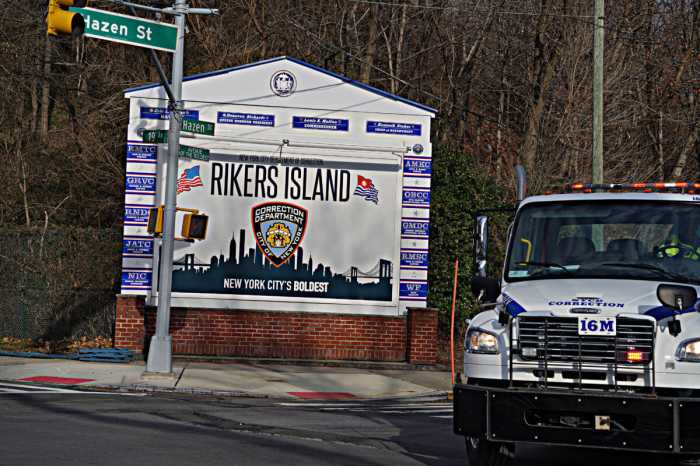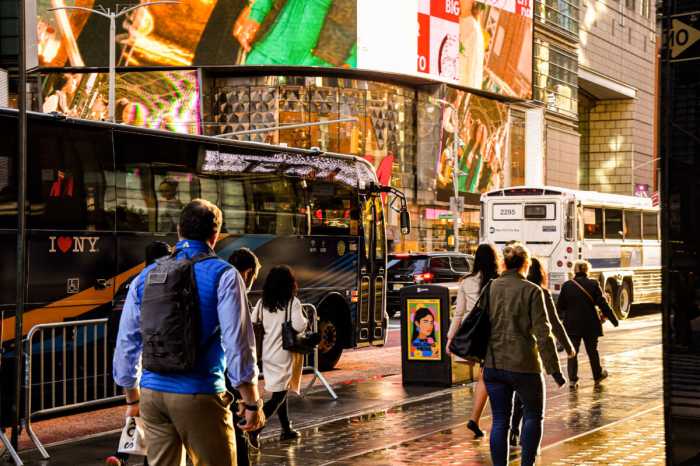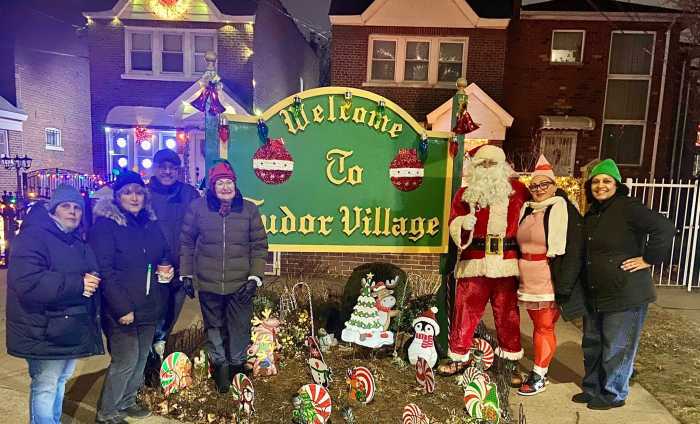Some of the City Council’s most progressive members went to verbal blows with NYPD brass Tuesday over questions on Mayor Eric Adams’ “Blueprint to End Gun Violence” plan during a Committee on Public Safety oversight hearing.
Council Members Tiffany Caban (D – Queens) and Chi Osse (D – Brooklyn) both had heated exchanges with NYPD Commissioner Keechant Sewell, Deputy Mayor for Public Safety Philip Banks, NYPD Chief of Department Kenneth Corey and other top police officials. They were also joined by Mayor’s Office of Criminal Justice Director (MOCJ) Deanna Logan and Public Advocate Jumaane Williams.
Many of the council members’ questions concerned the mayor’s plan to focus on cracking down on low-level offenses like fare evasion and loitering – often referred to as “broken windows policing.” Additionally, they focussed on the NYPD’s newly deployed “neighborhood safety teams” tasked with getting guns off the streets – a revamped uniformed version of the anti-crime unit that was disbanded in 2020.
Adams rolled out his 15-page Blueprint to End Gun Violence, in January after two NYPD officers were shot and killed responding to a domestic dispute in Harlem. In addition to harsher enforcement of low-level crimes and bringing back the anti-gun unit, the plan also includes putting more patrol officers on the streets and increasing resources for the Gun Violence Suppression Division – a specialized unit aimed at seizing guns and building cases against traffickers.
The plan also contains sections that call for expansions of social initiatives like the Crisis Management System (CMS) for violence interruption, programs to help people find employment and mental health resources.
In one of the more contentious back-and-forths, Caban asked Sewell if the department had reviewed research on the impacts of broken windows policing on the communities it’s affecting before launching the initiative. Sewell said the NYPD takes a look at “impacts, studies and results” for every initiative that they implement but wouldn’t commit to Caban’s request to share which particular research the department reviewed with the City Council within the next two weeks.
“I’m asking you, will you simply provide the research?” Caban said. “Tell the public what you’re relying on to make these really impactful important decisions that affect predominantly Black and brown low income New Yorkers. I’m asking you to pass along the information you use to make these really consequential decisions. You said you look back at research on these negative mental health impacts, increased anxiety and trauma. And I’m asking that you provide them to us so that we can share it with our colleagues and our constituents. And I have not gotten an answer as to whether or not you will do that. And the lack of willingness for transparency is deeply deeply concerning.”
“We have been transparent since the beginning,” Sewell responded.
The commissioner also insisted that policing low-level crimes is a vital piece of combating gun violence, because minor offenses are often precursors to more serious crimes.
In another exchange, while questioning the merrits of the neighborhood safety teams, Osse said precinct commanders in his district have described the new anti-gun units as “performative.”
“To me, when I hear of initiatives like this as performative, to me it’s a waste of taxpayer dollars,” Osse said. “Meanwhile, numerous agencies in the city are extremely underfunded. Agencies that actually keep our communities safe.”
“I would say that the seizing of 20 guns in two weeks time is not performative,” Corey said.
Earlier in the hearing, Public Safety Committee Chair Kamillah Hanks (D – Staten Island) asked Corey how the NYPD goes about selecting the officers in its neighborhood safety teams and what kinds of training they receive.
Corey said there are three big things that separate the neighborhood safety teams from the old anti-crime units: selection, training and oversight. All of the selected officers are volunteers, Corey said, who then go through multiple rounds of checks by their commanding officer, borough commander in the area they’re working for approval in and the department’s Risk Management Bureau.
“Our Risk Management Bureau did an extensive dive into each of these individuals,” Corey said. “And they looked at certain things like past complaints, any prior disciplinary action, their performance evaluation, any civilian complaints, any civilian commendations for that matter. And then perhaps most importantly … they reviewed body camera footage of these officers’ encounters with individuals that were taking place in the present, to try to determine whether or not they approached their duties properly, whether they treated people with dignity and respect, whether they applied the law correctly.”
Those selected, Corey said, then go onto a seven-day training course that was created specifically for these units. The class focuses on deescalation, constitutional policing, risk identification and law and risk management so the officers know what they can do within the law.
Corey said the training process also helped them root out officers who didn’t turn out to be fit for these teams after being initially selected.
“The decision was made that they would not be assigned to these teams because of their performance in training,” Corey said. “Because the instructors saw things, as they went through the real world scenarios that they were tasked with completing, that maybe raised alarm bells and said, ‘maybe this person is not a good fit for this assignment.’”
Then, Corey said, each of these teams will have several layers of oversight. This starts with the sergeant assigned to each team, who’s only responsibility is to supervise the five officers on their team. There are then additional layers of oversight at the precinct commander, patrol borough, Chief of Patrol’s office and Risk Management Bureau levels.
“Our Risk Management Bureau has a team of personnel solely dedicated to reviewing and analyzing the performance of officers assigned to these neighborhood safety teams,” Corey said. “That would include a review certainly of their body camera videos. It’s going to include a review of their paperwork. It’s going to look at the outcomes of various arrests and other situations that they’re involved in.”
On top of all those internal layers, Corey said, there’s the NYPD’s court appointed federal monitor, who has access to all of that information.
Councilman Charles Barron (D – Brooklyn), however, said after years of working on criminal justice issues, he sees Adams’ gun violence plan as the same old ineffective rhetoric that he’s heard for three decades. And, Barron added, funding for the NYPD far outweighs funding for violence interruption and social programs that would be far more effective at stemming gun violence.
“This blueprint, 75% of it is policing, 25% of it is lip service for mental health and youth entrepreneurship,” Barron said. “The dollars simply don’t match. Mayor, we cannot police our way out of this. You can’t turn our communities into a police state.The money is in the police department and policing more than in social services.”










